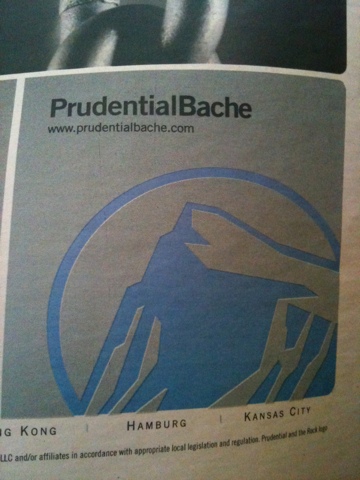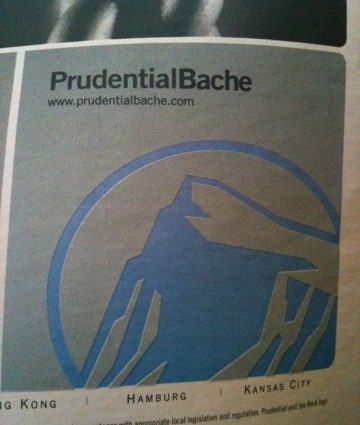 Prudential’s nearly forgotten Bache brand is being given more prominence, this week appearing in ads in Financial Times.
Prudential’s nearly forgotten Bache brand is being given more prominence, this week appearing in ads in Financial Times.
New York’s Bache & Company was one of the great old brokerages, with roots into the 19th century. It went through dozens of names; it eventually merged into Prudential and became Prudential Bache. However, in 2003, the Bache name mostly disappeared and the retail brokerage of Prudential became part of Wachovia Securities, which encompassed the assets of regional brokerages such as Wheat First Butcher Singer, A.G. Edwards and others. However, the brand survived in Germany with the Bache Commodities Group, the global commodities and financial derivatives business of Prudential Financial, Inc. (NYSE: PRU).
The brokerage and investment house, originally J.S. Bache & Company, is detailed as one of the noted merchant banks founded by the great Jewish upper class families of New York. According to Stephen Birmingham’s seminal book Our Crowd, the company’s founding fathers Leopold Cahn and Semon Bache were not just partners, but linked in marriage, as Cahn was married to Bache’s wife’s sister. Wikipedia has the roots of the company as beginning in 1879 with Leopold S. Cahn & Co.
Emphasis on Bache has shown hope for the revival of other classic brands during a time of merger and upheaval in the investment and financial world. Because of the crisis of confidence in current institutions, older brands from family names have been seen by consumers and the general public as trustworthy.
Life insurance brands such as Prudential and New York Life, in particular, have been valuable and stayed through recent years, though some brands like Genworth and Aviva have stupidly been created to replace iconic and storied brands like Life of Virginia and Norwich Union, respectively.
Financial services companies should always try to see ways to keep older brands alive during mergers; the best idea is using them as the brand name for a product, subsidiary company or operating unit. Companies that do not use brand names can risk them being used by potential start-ups. By keeping old brands alive for subsidiary units, companies can keep clear title to the brands, and the distinct name enhances the value of the larger company. In addition, if circumstances change, the company has a number of brands to use when companies are spun off or new products are created.
Thoughts on old brokerage brands? Leave a comment below?








